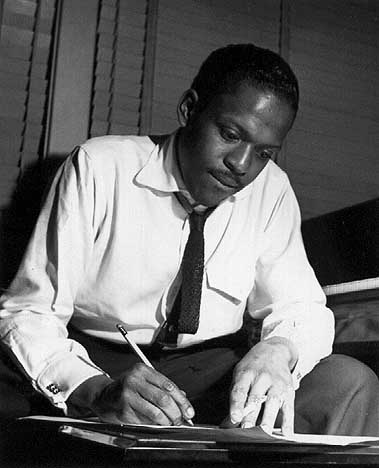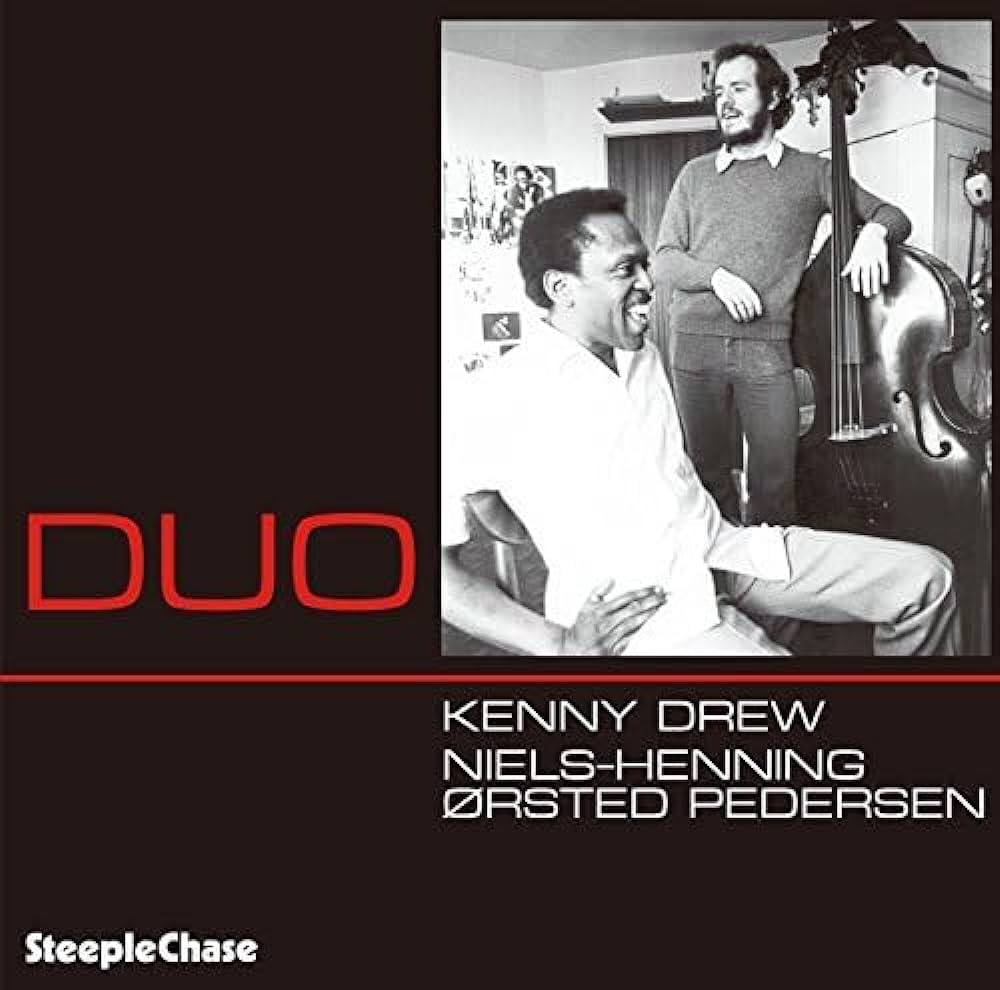Come Summer – Kenny Drew, Sr.
A gorgeous ballad that deserves wider recognition. We have a piano lead sheet from Kenny Drew's copyrighted manuscript; the form is a little different from how he recorded it, and we show the same form as written in our melody lead sheets.
- Recording: Kenny Drew - Duo
- Recorded on: April 2, 1973
- Label: Steeplechase (SCS 1002)
- Concert Key: No key center
- Vocal Range: , to
- Style: Ballad
- Piano - Kenny Drew
Video
- Description
- Historical Notes
- Solos
- Piano Corner
- Bass Corner
- Drum Corner
- Guitar Corner
- Inside & Beyond
- Minus You
Kenny Drew's solo piano version is the only recording of Come Summer. Our audio excerpt starts at the melody; he plays an intro and then the melody twice, rubato throughout, with no solo choruses.
Come Summer is a beautiful, romantic ballad, with a lyrical melody that flows through many shifts of key center. The unusual form is divided into an A section (12 measures) in 4/4 and a B section in 3/4. In Kenny's copyrighted manuscript, the B section is four measures longer than he plays it on the recording—18 measures rather than 14. The extra written measures are after the fourth measure of B, inserting a modulation to D♭ major between the two resolutions to E♭ major. We preserve the extra four measures in our melody lead sheet; now you have to opportunity to study and perform Kenny's complete composition as he notated it. In the lead sheet, the ending reflects the recording: Kenny ends the first melody chorus in D minor (as written in his manuscript), but the second chorus in D major.
Toward the end of the B section, there are two measures where we indicate "optional 8va" on the lead sheets. The melody here is as written in the manuscript, but on the recording Kenny plays this line an octave higher both times. In the upper octave as played, the melody flows more smoothly into the next measure.
Click on Piano Corner for more details about our piano edition from Kenny's manuscript.
Come Summer is a beautiful, romantic ballad, with a lyrical melody that flows through many shifts of key center. The unusual form is divided into an A section (12 measures) in 4/4 and a B section in 3/4. In Kenny's copyrighted manuscript, the B section is four measures longer than he plays it on the recording—18 measures rather than 14. The extra written measures are after the fourth measure of B, inserting a modulation to D♭ major between the two resolutions to E♭ major. We preserve the extra four measures in our melody lead sheet; now you have to opportunity to study and perform Kenny's complete composition as he notated it. In the lead sheet, the ending reflects the recording: Kenny ends the first melody chorus in D minor (as written in his manuscript), but the second chorus in D major.
Toward the end of the B section, there are two measures where we indicate "optional 8va" on the lead sheets. The melody here is as written in the manuscript, but on the recording Kenny plays this line an octave higher both times. In the upper octave as played, the melody flows more smoothly into the next measure.
Click on Piano Corner for more details about our piano edition from Kenny's manuscript.
Don Sickler: "This is Kenny's only recording of his beautiful ballad Come Summer. On April 5, 1973, three days after this recording session, Kenny finished a manuscript to send to the Copyright Office for copyright registration. This two-staff manuscript, with chord voicings, reveals a lot more about the composition. In it, Kenny added four measures to his recorded B section, and his manuscript clarifies the rest of the melody from his rubato recording. Besides lead sheet editions, we are making his piano voicings edition available."
This piano lead sheet shows simple two-handed voicings accompanying the melody. In the last two measures of A, there is a half-note countermelody without roots in the left hand. We include an F♯m9 chord symbol on beat 4 in the last measure of A even though only the melody note changes, with the left hand holding a single note F♯ from the previous chord, D7. Kenny plays F♯m9 here both times on the recording.
This piano lead sheet shows simple two-handed voicings accompanying the melody. In the last two measures of A, there is a half-note countermelody without roots in the left hand. We include an F♯m9 chord symbol on beat 4 in the last measure of A even though only the melody note changes, with the left hand holding a single note F♯ from the previous chord, D7. Kenny plays F♯m9 here both times on the recording.
Related Songs
Email Send Come Summer to a friend
Send this page to a friend via email. Add your name or email in the first field. In the second, add one or more email addresses, separated by a comma.

Kenny Drew, Sr.
August 28, 1928 – August 4, 1993
Kenny Drew was born in New York City. He studied classical piano but soon turned to jazz. His recording career started in 1950 at age 22, first with Howard McGhee for Blue Note, then Sonny Stitt for Prestige. These two 1950 recordings plus a surviving radio broadcast with Charlie Parker (December 8, 1950) put him in the company of jazz greats J.J Johnson, Max Roach and Art Blakey. Read more...
There was a problem.
...

